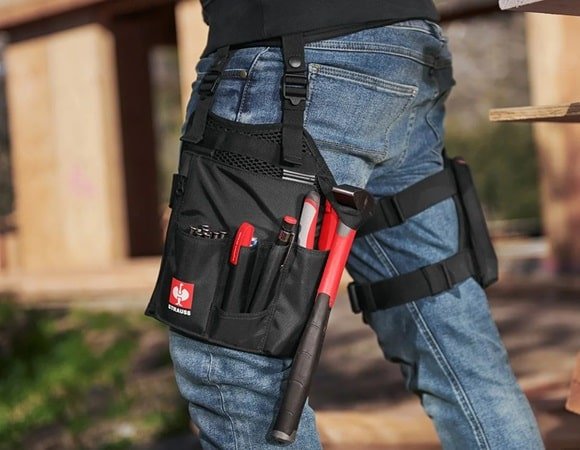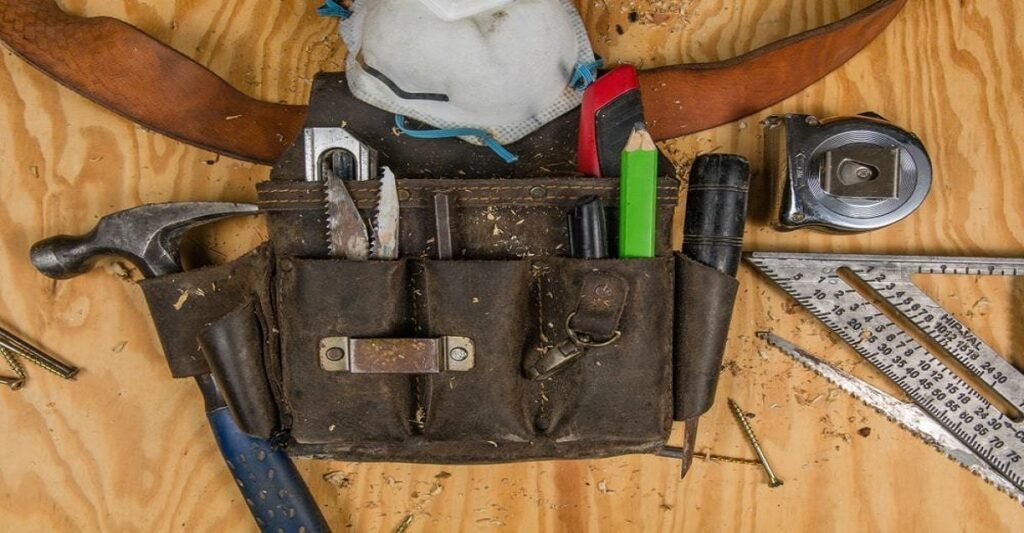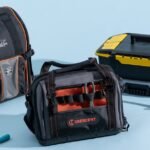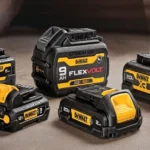A well-organized tool bag is essential for both professionals and DIY enthusiasts, as it enhances efficiency and productivity on the job. If you are looking for how to choose the right tool bag, it is important to consider factors such as your specific needs, and the type of tools you commonly use.
Categorizing your tools based on functionality and frequency of use will help you determine the most efficient way to organize them within your tool bag.
Select The Right Tool Bag: Organize Your Tools Effectively
Selecting the right tool bag is crucial for an effective organization. Consider the various types available, such as backpacks, totes, or tool belts, and choose a tool bag that suits your needs and preferences in size, compartments, durability, and comfort.
How To Choose The Right Tool Bags?
Choosing the right tool bag is crucial for effective organization and transportation of your tools. Here are the key factors to consider when selecting a tool bag:
Consider Your Work Environment
Different trades require different tools and equipment, and therefore different storage solutions. Consider the type of tools you commonly use and the work environment to determine specific storage solutions.
For example, an electrician may need a bag with specialized pockets for pliers and wire cutters, while a carpenter may need a bag with more extensive compartments for saws and drills.
Size and Capacity
Size and capacity are two of the most important factors when choosing a tool bag. Consider the number of tools you carry and choose a bag that is large enough to accommodate them without being overly bulky.
A well-designed tool bag will have compartments and pockets to maximize organization and make it easy to locate and retrieve the tools you need during your work.
Compartments
Compartments are essential for the effective organization of your tools. Consider the type and number of compartments within the tool bag to maximize organization. This will allow you to quickly locate and retrieve the tools you need during your work.
Material and Durability
The material and durability of your tool bag are also crucial factors to consider. A bag made of high-quality materials such as ballistic nylon or heavy-duty canvas will be more durable and long-lasting.
Additionally, consider the type of zippers and fasteners on the bag. YKK zippers with pull tags are easy to operate with gloved hands.
Comfort and Portability
If you will be carrying the bag for extended periods, prioritize comfort. Choose a bag with a padded handle, shoulder strap, or comfortable padded straps for carrying the bag.
Additionally, consider the type of bag that suits your needs and preferences in terms of portability, such as backpacks, totes, or tool belts.
Closure and Security
The types of fasteners your tool bag is fitted with also have a bearing on its accessibility and security. Tool bags with framed openings can make it easier to reach internal tools, compared to those made of soft fabric.
If you opt for a tool bag with zippers or buckles, be sure to go for a hardwearing material.
By keeping these factors in mind, you can select the right tool bag for your needs and preferences. A well-designed tool bag will make the organization process easier and enhance your efficiency and productivity on the job.
Types Of Tool Bags Available

There are several types of tool bags available, each designed to cater to specific needs and preferences. Some of the common types of tool bags include:
- Soft-Sided Tool Bags: These are the most common type of tool bags. They have a zipper closure, and when unzipped, the soft sides allow the mouths to open and close like a gate, hence the name “gate mouth tool bag”.
- Tool Totes and Organizers: These are designed with multiple compartments and pockets to keep your tools organized. They come in different sizes, ranging from small to large, to accommodate various tool collections. Some tool totes even have a removable divider system, allowing you to customize the layout to fit your specific needs.
- Tool Backpacks: These combine the convenience of a backpack with the storage capacity of a tool bag. They are designed with durable materials to withstand harsh job site conditions and are manufactured with comfortable padded straps and a supportive design.
- Tool Belts: Tool belts are a popular choice for professionals who need a hands-free solution for carrying their tools. They offer excellent mobility and keep essential tools within arm’s reach, but they may have limited capacity and could become uncomfortable during extended wear.
- Bucket Tool Bags: These bags are designed to hold larger tools and equipment that can fit in a bucket-shaped compartment. They are suitable for trades that require larger tools or for storing bulky items.
- Rolling Tool Bags: These bags are designed to be carried like a rolling suitcase and usually have a rigid body. They are equipped with a trolley bar for easy transportation and can be a convenient option for those who need to cover long distances while carrying their tools.
The Final Words
Choosing the right tool bag is essential for professionals and DIY enthusiasts to keep their tools organized and easily accessible. By assessing factors such as type, size, material, and functionality, one can make an informed decision.
The versatility, convenience, and organizational benefits of tool bags make them a preferred choice over toolboxes for many users. Ultimately, the right tool bag can enhance efficiency, comfort, and safety in various work environments.
FAQs (Frequently Asked Questions)
What are the essential factors to consider when choosing a tool bag?
When choosing a tool bag, consider the type of tools you have, the work environment, the bag’s size and compartments, material durability, and the bag’s comfort and functionality.
What are the different types of tool bags available?
Tool bags come in various types such as backpacks, totes, and tool belts, each with its advantages and suitability for different purposes.
Where can I find specific information about tool pockets in Veto and Klein tool bags?
For specific questions about tool pockets in Veto and Klein tool bags, you can refer to forums and discussion threads where professionals share their experiences and insights.
What are some tips for maximizing organization within my tool bag?
To maximize organization, use customizable compartments, sort tools by type or frequency of use, and regularly review and adjust the bag’s contents.
How can I ensure my tool bag is comfortable to wear?
To ensure comfort and ergonomics, choose a tool bag with a padded handle or shoulder strap, and consider the bag’s weight and balance when carrying it.

Adam is a tool geek who just loves making and breaking things. Doing the home improvements works and repairing things with his tools is his favorite past time. He loves to keep his tools arranged and sorted. On this blog, he shares his experience and knowledge.








